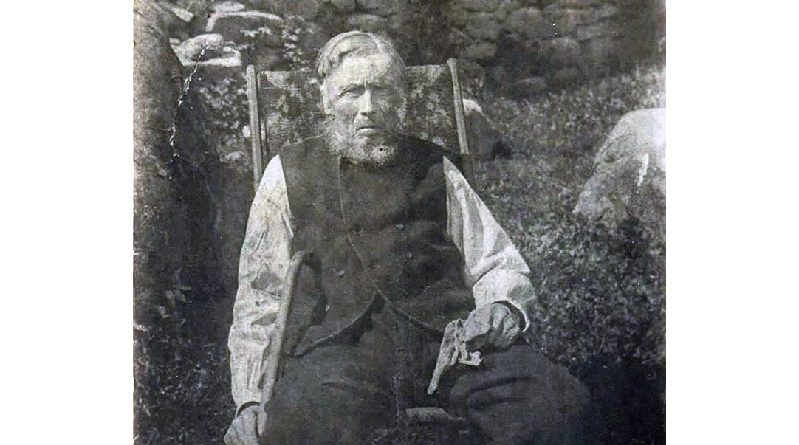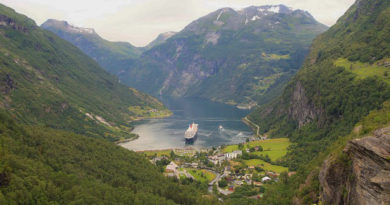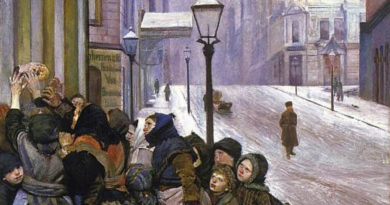The pension of the past
Most of us have today some sort of pension waiting for us when our working days are over.
The featured photo is Martinus Rasmussen Vestnes. Photo used with kind permission from Janet Swanson
In Norway pension paid by the state was put in place in 1936 (Jakhelln SNL 2018). Before this people were dependent on having been able to “invest” in their younger years to have support in their old age.
I am going to talk a little about this support. Different names for this support was used in different parts of Norway. Here are the most common names
- Kår (often written kaar)
- Vilkår (often written Vilkaar/Vildkaar)
- Føderåd (often written Føderaad)
- Livaure/Livøre
- Fødsleverd
- Foddog
- Follog
- Folga
- Oppsetnad
- Hold
- Fletføring
(Based on Hovdhaugen 1984, 26-27)
Most of these words can be found under “occupation” for an elderly person in the censuses usually in connection with -mann/mand, kone, -enke/enche or -enkemann/enchemand. This means they are living as “pensioners” at the farm based on an agreement made with younger people who, under certain conditions, agree to take care of them.
I will in the following use the word “support” to describe this agreement and “pensioner(s)” to describe the person(s) who receive the support. Likewise, I will use “caregiver(s)” to describe those who are giving the support.
The institution of support takes many different forms depending on what the pensioners have been able to invest.
Often we see agreements of support being made when transferring ownership of property. This is, of course, an investment that can easily be valued in money. However, we also see agreements of support being made on farms that are rented and even on cotter’s places. In the latter cases, there is no high valued property changing hands except some moveables and perhaps some animals.
Based on this we can see that the investments made by the pensioner goes beyond monetary value and also describe the hard work, thought and care that he or she has put into running the farm or cotter’s place (Helland-Hansen 1973:164). Thus, the right to support is not necessarily connected to the ownership of a farm/cotter’s place, but also to the person(s) running it (Rabben 1970:299). We should also mention the “investment” in love and care for a child, and this child’s obligation to give back to his or her parents.
Before we go on, I should also mention that agreement of support could also be made for younger people, who for some reason are not able to care for themselves. Olav Rekdal refers to such an agreement in his “bygdebok” Gard og Slekt, where the farmer Ole Knudson Sør-Sylte transfers half of his property to his son Iver. The contract includes an earlier agreement of support made with Iver about one of Ole Knudson’s other sons Peder, who is ill (Rekdal 1973:136). Also, an agreement of support may include the support of younger sons, usually until they are confirmed and considered as adults. It could include provisions for daughters, sometimes until they are married (Helland-Hansen 1973:169).
We can tell that the support could become a burden for the caregiver as he or she might have to support both parents, grandparents, and siblings.
When agreements of support were made on rented farms and cotter’s places, the owner of the land had to agree to the deal.
A rough estimate tells that 83,1% of the agreements were made by landowners. 14% by tenant farmers and only 2,9% by cotters (Helland-Hansen 1973:174).
The support was a first priory liability of the caregivers. If the caregiver decided to sell or leave, he or she was still responsible for the support and the contract with the new owners or caretakers (of a cotter’s place) had to include the support if the pensioner so wished. Likewise, the agreements of support were given on, or from the farm. Should a pensioner decide to leave, he or she could normally not expect to keep the support (Frimannslund 1988:8), but Hovdhaugen mentions that in parts of Norway there are a few examples of contracts that states that the pensioner could leave the farm and still keep the right to support (Hovdhaugen 1984:102)
The agreement of support was binding for the parties. In the early days, the support was settled by oral agreement. There is one known written agreement of support from the year 1315, but it was first towards the middle of the 1700s that it became common to have the agreement in written form (Frimannslund 1988:8).
Who were the parts of the agreement?
There is no doubt that the majority of the agreements of support were made between (grand)parents and a child/grandchild. This was most often a son, due to the male primogeniture. In some cases, the task of supporting parents could be divided between several of the children (Rabben 1970:302).
There was also a number of couples or singles with no heirs, who sold their farm having an agreement of support as part of the sales price.
There could be individuals who had worked all their lives as servants and made agreements of support with the farm where they had worked in return for leaving whatever they may have of money and possessions to the caregivers (Frimannslund 1988:10).
Other persons with saved up money could buy an agreement for support.
What was the content of the support?
The content of the support was dependent on the income of the property. Pensioners on large farms where they transferred the ownership, could, and did, expect more lucrative deals than pensioners on rented farms and cotter’s places.
The first agreements of support only mention food and clothing (Helland-Hansen 1973:168). We must assume that this also included a place to sleep.
From these simple conditions at one end of the spectrum, the other end is detailed documents with long lists of the rights of the pensioner.
- On the large farms, the pensioners might have their own house and household. Other places part of the farmhouse contained a separate “flat” where the pensioners lived. Like we see below the pensioners could be given certain rooms in the house to be their living quarters.
- Where the pensioners didn’t have their own household they could be served the food in their rooms or they could eat with the rest of the farm.
- The pensioners could be given a certain number of animals from which they got their milk, meat, wool etc. The number of animals was determined by the size of the farm.
- Grain could be provided as a given quantum of barrels or as the product of a given size of land.
- At the wealthier farms, the contract might contain demands for tobacco, beer and liquor.
- As coffee became part of Norwegian life, we see this as a part of the provisions demanded in the contracts.
- Candlelights were normally not mentioned in the contracts, but towards the end of the 1800s kerosene for lamps are mentioned.
- Like we see below, the use of a horse could be part of the contract.
- There are a few examples where the pensioners are to be paid a certain amount of money to cover the expenses for a maid.
- Many contracts contained a demand for a proper burial.
Here is an example of a contract from the farm Haugum in Overhalla, Trøndelag county. One may say that this contract is somewhere in the middle of the spectrum.
- Fodder for two cows and eight sheep. These were to be kept together with the other animals on the farm
- Two barrels oats and two barrels barley. They are to be rinsed and in good condition
- Half a barrel grey peas and four barrels of potatoes
- Land to seed 6 mark (2,81 lb) linseed
- Free housing: one chamber by the living room and a loft. Both furnished.
- Access to the horse, both for church and other needs
- Free firewood and water brought in.
In addition Ole committed, without any compensation, to care for his parents in their old age and in case of sickness (Haugum 1962:52)
Sources:
Store Norske Leksikon (SNL), Henning Jakhelln, Alderspensjon. Last revised Dec. 17 2018. https://snl.no/alderspensjon
Bjarne Rabben, Herøyboka – Landslag og folkeliv. Herøy Sogelag 1970
Einar Hovdhaugen På Kår – Den gamle føderådsskipnaden. Den Norske Samlaget, Oslo 1984
Gerd Haugum Gårds- og slektshistorie for Haugum i Inderøy Self published. Inderøy 1962
Kjeld Helland-Hansen Kårskipnaden in Halvard Bjørvik et al. Nærsamfunnet i historisk lys – Utvalde artiklar frå «Heimen» i 50 år. Univeristetsforlaget, Oslo 1973
Kjeld Helland-Hansen. Føderådsordningens historie i Norge. Riksantikvarens skriftserie 3. Oslo 1997
Olav Rekdal Gard og Slektshistorie for Vestnes – Tresfjord Tresfjord I. Vestnes kommune, Vestnes 1973
Rigmor Frimannslund Å være gammel i bygdesamfunnet i eldre tid in Artikler i etnologi. Institutt for etnologi. Universitetet i Oslo 1988






Great article with good examples and explanation. Helpful for North Americans to understand the situation.
Thank you for this. Interesting information. And it helps me understand what I see in the bygdeboker about living arrangements.
Great piece
Very helpful. It was all completely new to me.
This is an amazing article, Martin. Very informative for those of us trying to understand the Norwegian history and system. You put a ton of research into this and it is very appreciated. Congratulations and much gratitude for this wonderful work.
Very interesting. I’ve seen these terms a lot and now they makes more sense. It’s interesting that it isn’t necessarily a family member who is the caregiver.
A big thanks to all of you who took the time to comment and give me positive feedback. That’s what motivates me to keep writing. 🙂